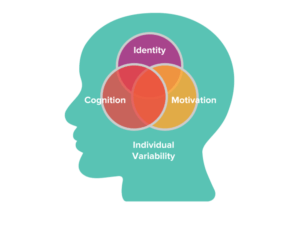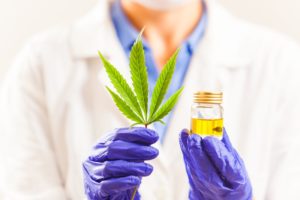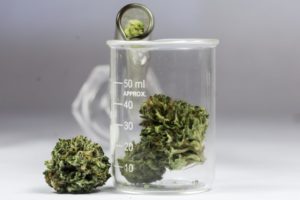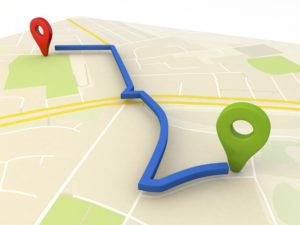 Generally, Learning and Development (or L&D) professionals ask themselves the question when developing training for the cannabis industry: “How can I deliver services as quickly as possible to the wishes of the customer?” On the other hand, others ask a more fundamental question: “Does the service work?”
Generally, Learning and Development (or L&D) professionals ask themselves the question when developing training for the cannabis industry: “How can I deliver services as quickly as possible to the wishes of the customer?” On the other hand, others ask a more fundamental question: “Does the service work?”
To determine the effectiveness of any service, the L&D professional looks for scientific evidence. Scientific evidence will help decision-making about learning services. The question is, is this evidence-based or evidence-informed?
Evidence-Based Medicine
 For physicians, evidence-based medicine in the cannabis industry is the norm and can be described as striving to base diagnosis and treatment on scientific research. Guidelines and protocols for diagnosis and treatment exist based on evidence-based medicine.
For physicians, evidence-based medicine in the cannabis industry is the norm and can be described as striving to base diagnosis and treatment on scientific research. Guidelines and protocols for diagnosis and treatment exist based on evidence-based medicine.
This increases the quality of diagnostics and treatment and supports the culture to improve existing practices, guidelines, and protocols. It also helps to renew each of these based on new scientific research. Evidence-based research is also used by doctors to develop a better do-not-do list.
Under the motto: “if it does not help, it will harm,” for example, the university medical centers in the Netherlands are working together to build this list of 1,300 pointless medical procedures for the time being. Similar programs are running in the US and other countries.
The better do-not-do list supports physicians in making informed choices about implementation or omitting diagnostics and therapy. Doing nothing is certainly an option if it is scientifically proven that a certain treatment does not work or is even harmful.
The better do-not-do list is good for the patient and the doctors and is cost-effective. Nurses have developed similar initiatives. Yes, the grass is always greener on the other side of the fence. Medicine has been working with evidence-based processes and work for more than 100 years.
There is much to learn for educational science for the cannabis industry from the approaches medical science has been taking for many years. For example, in medical science, despite the lively debate, the principle of evidence-based medicine is not under discussion.
There are, however, questions about how to improve scientific research for the cannabis industry, how to guarantee the autonomy of doctors, how to guarantee patient participation, and so on. Moreover, there is still a lot of work to be done, because around half of the current diagnosis and treatment is not (yet) evidence-based.
Evidence-Informed Educational Science
 It is difficult to compare educational science with medicine in terms of the disciplines and possibilities for scientific research in the cannabis industry. Tougher scientific research is the norm in medical practice. An example of this is the randomized controlled trial method with quantitative outcomes.
It is difficult to compare educational science with medicine in terms of the disciplines and possibilities for scientific research in the cannabis industry. Tougher scientific research is the norm in medical practice. An example of this is the randomized controlled trial method with quantitative outcomes.
Educational science is a social science and measuring effects are more difficult due to changing circumstances and studies that cannot be repeated (under comparable, controlled conditions). In evidence-based research, processes are more rigorous, and outcomes more distinct. It is also possible to use treatment guidelines and protocols for better outcomes.
Restraint is important in educational sciences because the research is less rigorous. That is why the medical community talks about ‘evidence-informed’ research. This refers to scientific research in educational sciences as the basis for decision-making about the effectiveness of learning solutions.
‘Evidence-based’ provides fairly hard results so that doctors can use research to develop guidelines for care provision. ‘Evidence-informed’ is less hard, but still very useful with a higher chance of success if applied, the importance of evidence-informed work is as follows:
Use the evidence in the cannabis industry to increase your knowledge and expertise so that you can have conversations with clients or partners, parents and colleague teachers, directors or school principals/headmasters, and so further on WHY you recommend certain design decisions.
It will improve your expertise, our value in cannabis organizations, and, most important our designs so that our learners can learn more effectively, efficiently, and enjoyable! In the cannabis industry learning world, there is a practice that leading professionals contribute and actively recommend evidence-informed work.
How To Promote Evidence-Informed Working?
 It is no exaggeration to state that the practice of corporate learning (or L&D) is still far removed from consistent evidence-informed research and work.
It is no exaggeration to state that the practice of corporate learning (or L&D) is still far removed from consistent evidence-informed research and work.
Take, for example, the persistent myth about learning styles that have existed for many decades. Scientifically, there is no evidence that people learn better when the instruction is tailored to someone’s learning preference or style.
Nevertheless, in many countries, 80 – 95% of education professionals and people, in general, believe that learning styles matter to educators. It seems difficult for scientific evidence to penetrate L&D practices. In this case, despite the many articles and tweets from scientists and L&D professionals that learning styles are not effective.
In addition to learning styles, more myths in education are relevant to L&D professionals. Two (2) more examples are:
- Self-discovery learning (insufficient evidence) versus direct instruction (lots of evidence).
- People remember 10% of what they read (no evidence of the percentages and misuse of experience).
More information about myths is available to promote evidence-informed working within L&D. As is often the case in evidence-informed work, it is clear that being accepted practice is not the same as being right. Below are four recommendations to promote evidence-informed L&D practice.
1. Unlocking Research And Identifying Myths
 The proceeds of scientific research in the cannabis industry are not always accessible to L&D professionals in practice. This has to do with pressure, focus (work in progress), background knowledge, and the often-inaccessible nature of research studies.
The proceeds of scientific research in the cannabis industry are not always accessible to L&D professionals in practice. This has to do with pressure, focus (work in progress), background knowledge, and the often-inaccessible nature of research studies.
That is why it is to be welcomed that more and more books, articles, and blogs are being published to make the academic knowledge of educational sciences accessible to a larger audience. People put a lot of effort into making academic knowledge available for L&D practice.
Signaling of myths often goes on through social media (Twitter, LinkedIn, etc.) The nature of the messages varies greatly. Signaling can easily be done by pointing out to people that, for example, learning styles are not effective or that direct instruction works better than self-discovery learning.
The signaling function is intended to support people to work in a more evidence-informed way. This is not always reflected in the tone of social media expressions. Tweets and other messages are occasionally characterized by frustration, cynicism, irritation, or personal attacks.
This is dysfunctional and does not fit with the principles of educational sciences, where development is core business – and this applies not least to the development of evidence-informed L&D practice.
2. Integrate Into Education
 The L&D function in organizations can be found throughout the world. As a result, there are different systems of cannabis industry training in every country and continent that qualify people to work as a trainer, coaches, educationalists, educational technologists, learning data analysts, and so on.
The L&D function in organizations can be found throughout the world. As a result, there are different systems of cannabis industry training in every country and continent that qualify people to work as a trainer, coaches, educationalists, educational technologists, learning data analysts, and so on.
The field of study of training is broad and diverse. Moreover, large multinationals particularly employ not only people professionally qualified in L&D roles to develop formal educational services. This makes the challenge of working in evidence-informed ways even greater.
Nevertheless, it is crucial to integrate evidence-informed work into educational qualifications for L&D professionals. This is an important task and responsibility at the national level.
3. Implement And De-Implement In Practice
 Collaboration is required to bring evidence-informed educational sciences to L&D practice. This can be done by giving scientists, professional associations, policymakers, managers, and L&D professionals their role and responsibility in initiatives such as the following:
Collaboration is required to bring evidence-informed educational sciences to L&D practice. This can be done by giving scientists, professional associations, policymakers, managers, and L&D professionals their role and responsibility in initiatives such as the following:
- Policy and practical promotion that evidence-informed working is the new standard for L&D practice.
- Developing a database (copy from the doctors) with an overview of the evidence-informed learning solutions to support L&D professionals in practice.
- Give L&D professionals access to online databases of scientific publications.
- Pay attention to de-implementation through a better do-not-do list drawn up to reduce inappropriate learning solutions. Work smarter by copying doctors and nurses.
4. Work Together With Other Scientific Disciplines
 Learning in organizations is not limited to educational sciences. Professionals do not only learn in an educational setting but also by working (together).
Learning in organizations is not limited to educational sciences. Professionals do not only learn in an educational setting but also by working (together).
Learning is also not limited to individuals. Organizations (teams and individuals) also learn and that affects disciplines such as knowledge management, economics, and organizational development.
Evidence-informed working can benefit from the output of scientific research in other disciplines. The proponents of evidence-informed educational science form the basis for the further professionalization of our cannabis industry. That is also necessary because there is still a world to be gained about the quality of designing, implementing, and evaluating learning solutions.
To this end, it is necessary to join forces and support L&D practice through a coherent set of measures to make evidence-informed working the new standard. This goes further than merely signaling that L&D is not yet working well, or not sufficiently evidence-informed.
This is a responsibility for everyone who wants to contribute to a golden future for L&D in organizations.
Let us know what you think.




Responses